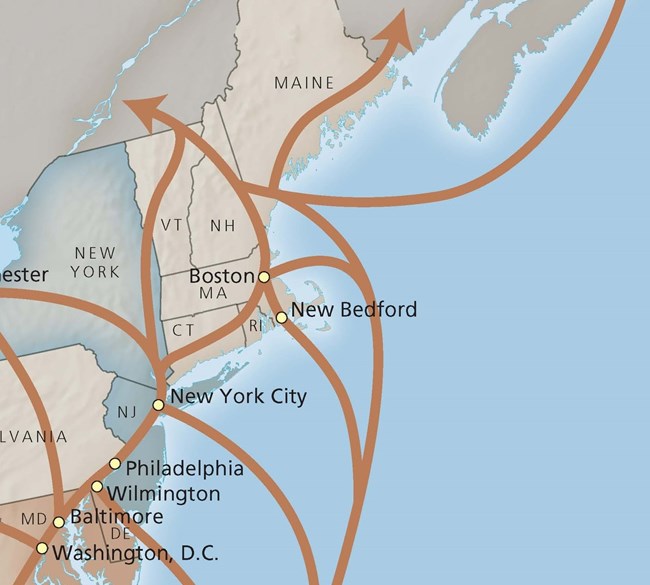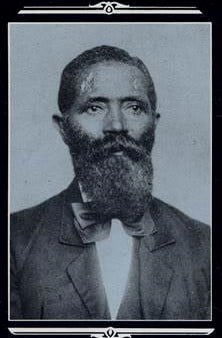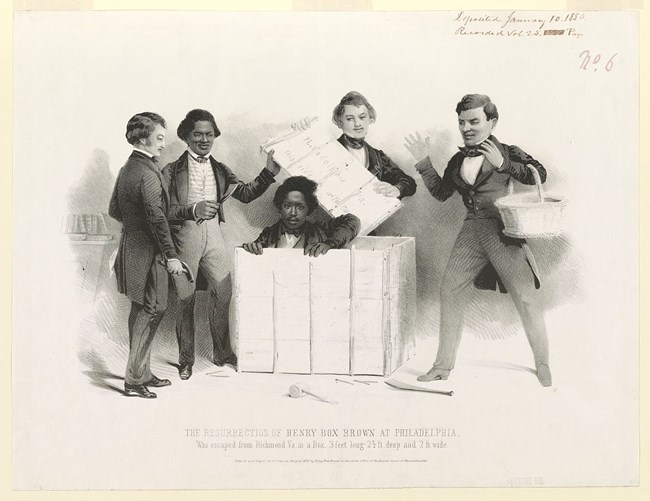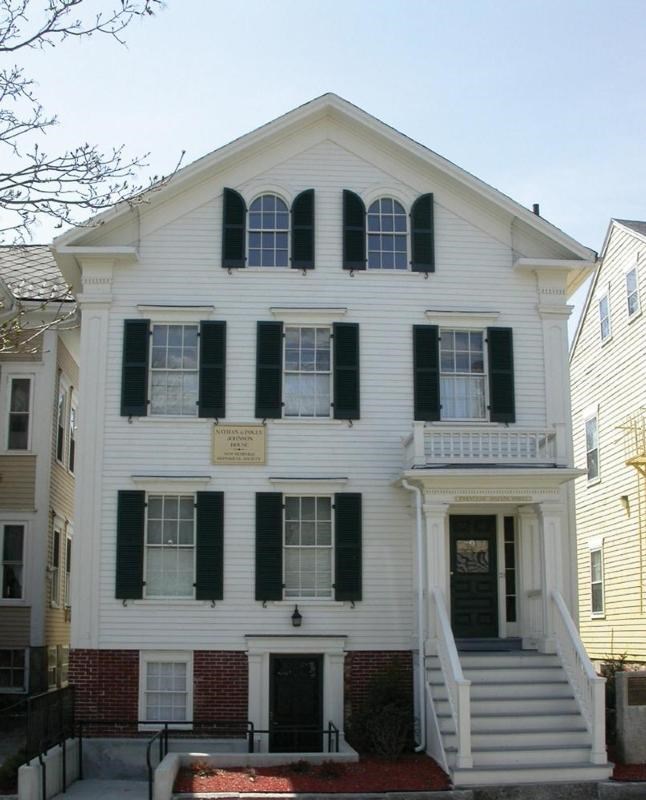Part of a series of articles titled #TakeoverTheNetwork.
Article
New Bedford Whaling National Historic Park #TakeovertheNetwork
On September 12, New Bedford Whaling National Historic Site took over the National Underground Railroad Network to Freedom's social media pages. See what they posted throughout the day...

NPS Photo
Feed Post 1: Introduction
Can a place have a soul? In the town of New Bedford, the answer is undoubtably yes! New Bedford demonstrated its soul through its willingness to harbor and help freedom seekers.
Today, the New Bedford Whaling National Historic Park will #TakeovertheNetwork. Stay tuned for more about New Bedford’s connection to the Underground Railroad!

Library of Congress
Feed Post 2: George Teamoh
Beginning in 1619 and continuing through the end of the Civil War, enslaved Africans resisted bondage to gain their freedom through acts of self-emancipation throughout the United States. In 1853, George Teamoh came to New Bedford as a fugitive and received help from local boarding-house keepers.
George Teamoh was born enslaved in Norfolk, Virginia in 1818 and escaped slavery through the Underground Railroad with the help of the sympathetic wife of his owner, Jane Thomas. In his slave narrative, “God Made Man, Man Made the Slave,” Teamoh writes about his escape to New Bedford, his wife Sallie and children, and life after the Civil War. Teamoh held the people of New Bedford in very high esteem. When he wrote about their willingness to harbor fugitives escaping slavery, he used a maritime metaphor stating that “with a zeal which no bounds had long years ago, laid down as a principle and nailed to the mast-head of their little bark that had crossed so many rugged waters, and because of this New Bedford was a magnet of attraction for fugitives.”

Library of Congress
Feed Post 3: Henry Box Brown
Henry Brown was born into slavery in Virginia in 1815. Brown dreamed of freedom, and convinced a storekeeper to ship him to freedom in a crate. On March 29, 1849, Brown climbed into a wooden box that was 3-feet and 1-inch long, 2-feet and 6-inches high, and 2-feet wide, and had three holes for air. Brown carried water and a tool for boring more holes with him into the box. His friends sealed the box with nails, and Brown was shipped express from Richmond, Virginia to Philadelphia, Pennsylvania. The box traveled by wagon and steamboat. Though marked "this side up," Brown's box was turned downward twice during the 27-hour ride, and once remained so for 18 miles.
"I felt my eyes swelling as if they would burst from their sockets; and the veins on my temples were dreadfully distended with pressure of blood upon my head.
—Henry Brown, Narrative of the Life of Henry Box Brown, Written by Himself
Upon arriving in Philadelphia, the city's vigilance committee sent Brown on to New York City. From there, he was sent to Joseph Ricketson in New Bedford.
Click on this link to read more on important individuals of New Bedford.

NPS Photo
Story
Learn more about the life of Nathan and Polly Johnson by following this link: Nathan and Polly Johnson House (U.S. National Park Service) (nps.gov)
Last updated: September 12, 2022
